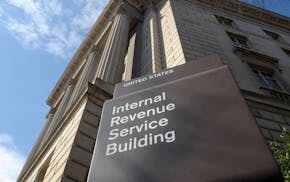"They've had a real impact on 200 souls here and a community to boot."
Those are the words that Ricky White, superintendent of the White Earth Nation's Circle of Life Academy, says Minnesota legislators need to take to heart as they weigh a retreat from a 2015 commitment to help students in the state's four Bureau of Indian Education (BIE) schools.
Two years ago, after a Star Tribune editorial series spotlighted the shameful state of BIE school buildings in Minnesota and elsewhere, Gov. Mark Dayton and legislators forged agreement on a historic aid package for American Indian students. Among its components: a significant boost in funding for math coaching, mentoring and other support for Native students in both public and tribal schools. Funding also helped start a new early childhood program in tribal communities.
But one part of package — known as the tribal school equalization program — also specifically targeted badly needed aid to the long-struggling BIE schools. In addition to Circle of Life Academy, BIE schools near Onamia, Bena and Cloquet are part of a federal K-12 system underfunded for decades by Congress. Around 850 students attend BIE schools here.
Minnesota has long supplemented federal funding to these schools to help them keep pace with the state's better-funded education system. In 2015, legislators lifted an 26-year-old cap on that aid of $1,500 per student. The move raised the cap to $3,260 per pupil. That helped schools like White's hire additional staff and devise culturally-grounded measures to address academic gaps, absenteeism and behavioral issues.
It was clear during the 2015 legislative hearings that the aid package, including BIE funding, was intended to be an ongoing commitment. That intention is reflected in the governor's proposed budget, which includes a $3.9 million appropriation over the next biennium to maintain the enhanced equalization aid. Dayton is to be commended for honoring this commitment to BIE students.
Regrettably, GOP legislators are proposing to return to the badly-outdated $1,500 cap, though they merit credit for supporting other American Indian initiatives. The House GOP's Education Finance Commitee chair, Rep. Jenifer Loon, said the previous BIE boost was a "one-time bump" — so to go back to $1,500 wouldn't be a "cut." Loon also said it wasn't manageable to match Dayton's funding level with her budget target.
Regardless of whether this is called a "cut," reverting to the $1,500 cap is backsliding and threatens to derail the momentum building at schools like White's, which has about 200 students. The four staffers he hired helped integrate Ojibwe cultural and language into the curriculum. White said this has played a crucial role in dramatically decreasing absenteeism. Behavioral problems have declined 50 percent during the past two years. More parents involved. Academic metrics are also improved.
Not having the additional equalization aid has "left us in a very panicked state here," White said. Instead of reverting to the old aid cap, legislators should "take pride in what they have done here."
We agree. This program is making headway against a monumental problem — the state's academic achievement gap — at a relatively small cost. All of Minnesota benefits when more students are prepared to graduate, enter the workforce and become good citizens and parents. Going backward in funding this vital program, especially when there's a budget surplus, is wrong.
Readers Write: Politicized education, presidential debates, election strategies, small-town papers

Taxes increasingly paying for the past — not the future
!["Since the [Hennepin Healthcare System] Board took control in 2007, CEO pay increased by more than 142%. Meanwhile, that same board sunsetted employee](https://arc.stimg.co/startribunemedia/J7MD7DSJWMP3KYIYUSCQTABOAA.jpg?h=91&w=145&fit=crop&bg=999&crop=faces)

